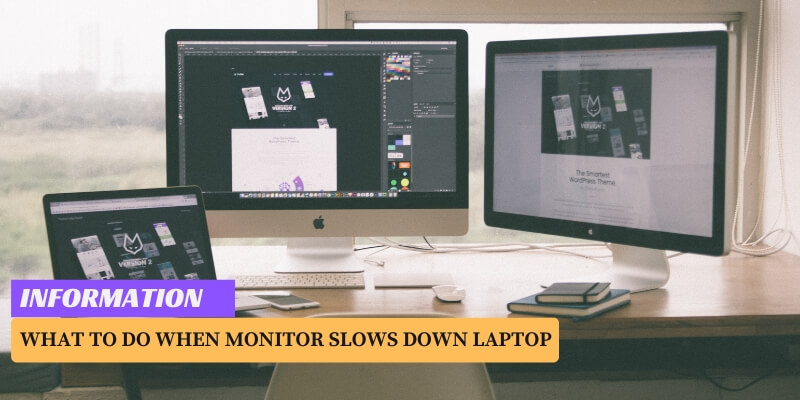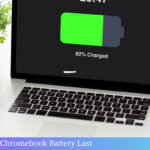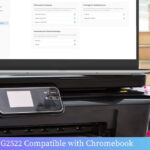To fix a slow laptop caused by a slow monitor, adjust the screen refresh rate and update the display driver. Is your laptop running slow due to a lagging monitor?
Don’t worry, there are a couple of simple steps you can take to resolve this issue. By adjusting the screen refresh rate and ensuring that your display driver is up to date, you can enhance the performance of your laptop.
These two factors play a crucial role in determining how smoothly your monitor operates. We will guide you through the process of resolving a slow laptop caused by a slow monitor.
Let’s dive in and optimize your laptop’s display performance for a more efficient user experience.
Table of Contents
- Adjusting Display Settings
- Clearing System Cache And Temporary Files
- Checking For Malware And Viruses
- Updating Operating System And Drivers
- Optimizing Laptop Performance
- Checking Hardware Connections
- Performing System Restore
- Reinstalling Operating System
- Seeking Professional Assistance
- Considering Hardware Upgrades
Adjusting Display Settings
Changing Screen Resolution
One of the first adjustments you can make is changing the screen resolution. The screen resolution refers to the number of pixels displayed on your monitor’s screen. Higher resolutions provide crisper and clearer images, but they also require more computing power. If your laptop’s monitor is slowing down, it may be worth considering reducing the screen resolution.
To change the screen resolution on your laptop, follow these steps:
- Right-click on your desktop and select “Display settings.” This will open the Display settings window.
- In the Display settings window, scroll down to the “Resolution” section.
- Click on the drop-down menu under “Resolution” to select a lower resolution.
- Click “Apply” to save the changes.
Adjusting Brightness And Contrast
Another aspect to consider when adjusting display settings is the brightness and contrast levels. These settings can significantly impact the visual quality of your laptop’s monitor and also affect its performance. To optimize your display, you can try adjusting the brightness and contrast settings.
To adjust brightness and contrast on your laptop, follow these steps:
- Right-click on your desktop and select “Display settings.”
- In the Display settings window, scroll down to the “Brightness and color” section.
- Use the sliders provided to adjust the brightness and contrast levels according to your preference.
- Click “Apply” to save the changes.
Updating Graphics Driver
The graphics driver is a crucial component that enables your laptop’s monitor to function properly. Outdated or incompatible graphics drivers can often cause slowdowns and other display-related issues. To ensure your laptop’s monitor is running efficiently, it is essential to keep your graphics driver up to date.
To update the graphics driver on your laptop, follow these steps:
- Right-click on the Windows Start button and select “Device Manager.”
- In the Device Manager window, expand the “Display adapters” category.
- Right-click on your graphics card and select “Update driver.”
- Choose the option to automatically search for updated driver software.
- Follow the on-screen instructions to install the updated driver.
Clearing System Cache And Temporary Files
An accumulation of system cache and temporary files over time can slow down your laptop’s performance. These files clog up your computer’s memory, causing lag and delays.
To tackle this issue, it’s crucial to regularly clear out these files, freeing up space and optimizing your laptop’s speed.
In this section, we will discuss three effective methods to clear system cache and temporary files: using disk cleanup tools, deleting temporary files, and clearing browser cache.
Using Disk Cleanup Tools
Disk cleanup tools are a built-in feature in most operating systems that allow you to remove unnecessary files and optimize your laptop. To access this tool in Windows, simply search for “Disk Cleanup” in the start menu.
Once opened, choose the drive you want to clean, typically the C: drive where your operating system is installed.
Next, the tool will scan the drive and present you with a list of file categories that can be safely removed. These categories may include temporary files, system cache, and old backups
It’s recommended to select all the categories to ensure a thorough clean-up.
Once you’ve selected the desired categories, click “OK” and then “Delete Files.” The tool will start removing the selected files, which may take a few minutes depending on the size of the files.
Deleting Temporary Files
In addition to using disk cleanup tools, manually deleting temporary files can further enhance your laptop’s performance.
Temporary files are typically created by applications whenever you perform certain tasks. Over time, these files accumulate and can slow down your system.
To manually delete temporary files, open the “Run” dialog box by pressing the Windows key + R. Type “%temp%” (without the quotes) and click “OK.” This will open the temporary files folder.
In the temporary files folder, you’ll find various files and folders. Simply select all the files and press the “Delete” key. You may encounter a few files that are in use and cannot be deleted, which you can skip.
It’s important to note that deleting temporary files won’t harm your system, as they are no longer needed once you’ve closed the respective applications.
Clearing Browser Cache
As you browse the internet, your web browser stores various files, such as images and website data, to load them quickly upon revisiting the same web page. However, over time, this cache can build up and impact your browser’s performance.
To clear the browser cache, open your web browser’s settings and locate the “Clear browsing data” or “Clear cache” option. The location of this option may vary depending on the browser you’re using.
Once found, select the desired time range for clearing the cache, such as “the past hour” or “since the beginning of time.”
Finally, click on the “Clear data” or “Clear cache” button to remove the stored files. It’s worth noting that clearing the browser cache might sign you out of websites, so make sure you have any necessary login credentials on hand.
Checking For Malware And Viruses
If your laptop is experiencing slow performance, one of the possible causes could be malware or viruses.
These malicious programs can not only compromise your data but also consume a significant amount of your computer’s resources, resulting in sluggishness and decreased productivity.
Fortunately, there are steps you can take to identify and remove these threats. In this section, we will discuss running a full system scan with antivirus software and removing malware and viruses effectively.
Running A Full System Scan With Antivirus Software
To begin the process of checking for malware and viruses, you should run a complete system scan using reliable antivirus software.
This can help detect any malicious programs present on your laptop and identify potential security breaches.
Ensure that your antivirus software is up to date before initiating the scan. The importance of running a full scan cannot be emphasized enough, as it covers all files and applications on your computer, leaving no room for hidden threats.
Once you have opened your antivirus software, navigate to the scan settings option. Here, you will find the choice to perform a full system scan.
Selecting this option will initiate a comprehensive examination of your laptop, searching for any signs of malware and viruses.
Depending on the size of your hard drive and the number of files, the scan may take some time. Be patient and wait for the software to complete the process.
Removing Malware And Viruses
After running the full system scan, it is essential to review the scan results carefully. Your antivirus software will typically provide a detailed report of its findings, indicating any malware or viruses detected on your laptop.
The first step in removing these threats is to quarantine the infected files. Quarantining isolates the infected files, preventing them from causing further harm to your system.
Once you have quarantined the infected files, your antivirus software may offer the option to delete or clean those files. It is important to weigh your options based on the severity of the threat and the importance of the affected files.
If the files are deemed harmless or are easily replaceable, it is recommended to delete them entirely. However, if the files contain critical or personal data, you may opt to clean them, which attempts to remove the malicious code while preserving the file’s integrity.
Keep in mind that effectively removing malware and viruses may involve more than a single scan. It is crucial to periodically update and schedule regular scans with your antivirus software to ensure ongoing protection and prevent future infections.
Remember, prevention is always better than cure when it comes to cybersecurity.
Taking proactive measures to check for malware and viruses is essential in maintaining the optimal performance of your laptop. By running a full system scan and removing any threats, you can safeguard your data and restore your laptop’s efficiency.
Now that we have covered the malware and virus-checking process, let’s move on to the next step in troubleshooting your laptop’s slow performance.
Updating Operating System And Drivers
Installing The Latest Operating System Updates
Keeping your operating system up to date is crucial for maintaining optimal performance on your laptop.
Updating your operating system not only enhances its security but also introduces new features and improvements that can help resolve performance issues, including a slow monitor.
To install the latest operating system updates on your laptop, follow these steps:
- Open the settings menu on your laptop. You can usually find it by clicking on the Start menu and selecting the settings icon.
- Navigate to the “Update & Security” section.
- Click on “Windows Update” and then select “Check for Updates”.
- If there are any available updates, click on “Install” to begin the installation process.
Once the updates have finished installing, restart your laptop to apply the changes. After rebooting, check if the monitor’s performance has improved. If not, proceed to the next step.
Updating Drivers For Display And Graphics
Outdated or incompatible drivers can often lead to performance issues, including a slow monitor. To ensure your laptop’s display and graphics drivers are up to date, follow the steps below:
- Open the Device Manager on your laptop. You can access it by right-clicking on the Start menu and selecting “Device Manager”.
- In the Device Manager window, locate the “Display adapters” or “Graphics cards” category and expand it.
- Right-click on your display or graphics card driver and select “Update driver”.
- Choose the option to search automatically for updated driver software. Windows will then search for the latest driver updates and install them if available.
- Once the driver update is completed, restart your laptop to apply the changes.
After restarting, check if the slow monitor issue has been resolved. If not, consider reaching out to the manufacturer’s support website or contacting their customer support for further assistance.
Optimizing Laptop Performance
Is your laptop lagging and slowing down? Don’t worry; we’ve got you covered! Optimizing your laptop’s performance can significantly improve its speed and efficiency.
In this article, we will explore some effective techniques to get your laptop running smoothly again. Let’s dive in!
Closing Unnecessary Background Programs
One of the major culprits behind a slow laptop is the presence of numerous unnecessary background programs running simultaneously.
These programs eat up your system resources and cause your laptop to lag. To optimize your laptop’s performance, it is essential to identify and close these programs.
You can manually close these programs through the Task Manager. To access it, press Ctrl + Shift + Esc and navigate to the “Processes” tab.
Look for programs that are consuming a significant amount of CPU and memory resources. Right-click on the program and select “End Task” to close it.
Another useful technique is to prevent unnecessary programs from launching at startup. This reduces the load on your laptop and helps it to boot faster.
To manage startup programs, press Ctrl + Shift + Esc to open the Task Manager, then navigate to the “Startup” tab. Right-click on the desired program and choose “Disable” to prevent it from launching automatically.
Upgrading Ram Or Hard Drive If Necessary
If your laptop continues to slow down despite closing unnecessary programs, it may be time for a hardware upgrade. Upgrading your laptop’s RAM or hard drive can significantly improve its performance.
RAM (Random Access Memory) is responsible for temporarily storing data that your laptop is actively using.
If you have insufficient RAM, your laptop may struggle with multitasking or running memory-intensive applications. Consider upgrading your RAM to a higher capacity to boost your laptop’s performance.
Similarly, upgrading your hard drive to a solid-state drive (SSD) can provide a substantial performance boost. Unlike traditional hard drives, SSDs use flash memory for data storage, resulting in faster read and write speeds.
This enables quicker file access and shorter boot times. However, it’s important to note that upgrading the hard drive requires transferring data or reinstalling the operating system, so it’s recommended to seek professional assistance if you aren’t familiar with the process.
By following these steps, you can optimize your laptop’s performance and get it back up to speed.
Remember to periodically close unnecessary background programs and consider hardware upgrades if necessary. Enjoy a faster and more productive laptop experience!
Checking Hardware Connections
When your laptop monitor slows down, it can be frustrating and hamper your productivity. However, before you reach out to tech support or start panicking about hardware failures, it’s essential to check the hardware connections.
Loose or faulty connections can often be the culprit behind a lagging monitor, and addressing them can resolve the issue quickly.
Let’s take a closer look at two crucial steps you can take to ensure your hardware connections are secure and functioning properly.
Ensuring Cables Are Securely Plugged In
One of the main causes of a slow laptop monitor is a loose or improperly connected cable. To rule out any possible connectivity issues, it is important to double-check that all cables connecting your monitor to the laptop are securely plugged in.
If you have an external monitor, start by checking the cable that connects your laptop to the monitor. Inspect both ends of the cable, ensuring they are firmly inserted into the respective ports.
Sometimes, cables can come loose due to movement or accidental tugs, resulting in a degraded or slow display. Reconnecting the cable snugly can often restore the monitor’s performance.
For laptops with built-in monitors, the cable connections are typically internal. In such cases, it might be necessary to open up the laptop’s casing and examine the cable connections.
If you are unfamiliar with laptop hardware, it’s advisable to seek professional assistance or consult the manufacturer’s documentation for your specific laptop model.
Testing The Monitor On Another Device
If you have ensured that all cables are securely plugged in and you still experience a slow monitor, it’s time to verify if the issue lies with the monitor itself. To do this, you can test your monitor on another device.
Start by disconnecting the monitor from your laptop and connecting it to another device, such as a desktop computer or another laptop. Ensure that the alternative device is in proper working condition.
If the monitor functions flawlessly on the other device, it indicates that the issue lies within your laptop rather than the monitor.
On the other hand, if the monitor exhibits the same slow performance on the alternative device, it suggests that the monitor itself might be faulty.
In such cases, you may need to consult the manufacturer’s troubleshooting resources or reach out to their support for further assistance.
Performing System Restore
When your monitor slows down your laptop, it can be incredibly frustrating. However, there is a solution that you can try before resorting to drastic measures such as replacing your monitor or laptop.
One of the most effective ways to fix this issue is by performing a system restore. This process allows you to revert your laptop to a previous working state, eliminating any potential problems that may be causing the slowdown. Here’s how to do it:
Restoring The Laptop To A Previous Working State
To begin the process of performing a system restore, follow these steps:
- Click on the Start button on your laptop and type “System Restore” in the search box.
- From the results, click on the “Create a restore point” option.
- A new window will open, click on the “System Restore” button.
- In the System Restore window, you’ll see a list of available restore points. These are snapshots of your laptop’s system files at different points in time.
- Select a restore point that predates the issue with your monitor slowing down your laptop. Make sure to choose a restore point where your laptop was functioning properly.
- Click on the “Next” button.
- Review the details of the restore point and click on “Finish” to start the system restore process.
- Wait for the system restore process to complete. Your laptop will restart several times during this process.
Once the system restore process is finished, your laptop should be reverted to a previous working state, and the issue with your monitor slowing down your laptop should hopefully be resolved.
It’s important to note that performing a system restore may uninstall any software or driver updates that were installed after the selected restore point. You may need to reinstall any programs or drivers that were affected.
Performing a system restore can be an effective solution when your monitor slows down your laptop.
By following the steps outlined above, you can revert your laptop to a previous working state and eliminate any potential issues causing the slowdown.
Give it a try before considering more drastic measures, and hopefully, you’ll be able to enjoy a faster and smoother laptop experience once again.
Reinstalling Operating System
Reinstalling The Operating System From Scratch
One of the most effective solutions to address a slow laptop caused by a sluggish monitor is to reinstall the operating system.
Reinstalling the operating system from scratch can help remove any corrupted files or unwanted programs that might be causing the slower performance. Here’s a step-by-step guide on how to reinstall the operating system:
- Back up your data: Before proceeding with the reinstallation process, it’s essential to back up all your important files and documents. This ensures that you don’t lose any valuable information during the reinstall process.
- Create a bootable USB or DVD: Obtain a copy of the operating system you want to reinstall and create a bootable USB or DVD. This will allow you to start the reinstallation process.
- Access the BIOS menu: Restart your laptop and press the designated key (usually displayed on the screen during boot) to enter the BIOS menu. In the BIOS menu, change the boot priority to the USB or DVD drive, depending on where you’ve created the bootable media.
- Start the reinstallation process: Once you’ve changed the boot priority, save the changes and exit the BIOS menu. Your laptop will now restart, and the operating system installation process will begin. Follow the on-screen instructions to proceed.
- Select installation preferences: During the installation process, you’ll be prompted to select your installation preferences, such as language, time zone, and disk partitioning. Choose the options that suit your preferences and requirements.
- Complete the installation: After selecting your preferences, the operating system will copy the necessary files and drivers to your laptop’s hard drive. This may take some time, so be patient. Once the installation is complete, your laptop will reboot.
- Install necessary drivers and updates: After the operating system installation, it’s crucial to install the necessary drivers and updates to ensure optimal performance.
Check the manufacturer’s website or use the operating system’s built-in update feature to download and install the latest drivers for all your hardware components. - Restore your backed-up files: Once you’ve completed the installation and updated your drivers, you can restore your backed-up files to your laptop. This will ensure that your important data is preserved.
Reinstalling the operating system can be a time-consuming process, but it can significantly help improve the performance of a slower laptop caused by a sluggish monitor.
By removing unnecessary files and programs, you can enhance your laptop’s speed and responsiveness. Remember to regularly update your operating system and drivers to maintain peak performance.
Seeking Professional Assistance
Contacting Technical Support
If you have tried all the troubleshooting steps and your laptop monitor is still slow, it might be time to seek professional assistance. One of the first options you should consider is contacting technical support.
Most laptop manufacturers have dedicated support lines where you can speak to a trained technician who can guide you through the problem-solving process.
When contacting technical support, be prepared with the necessary details about your laptop model, serial number, and the issues you are experiencing.
The technician will likely ask you to perform further diagnostic tests or provide instructions on resolving the problem. Follow their guidance carefully and provide them with accurate and detailed information to facilitate a speedy solution.
The benefit of contacting technical support is that it is often free and can save you time and effort. The technicians are trained professionals who deal with such issues regularly and can provide expert advice tailored to your specific situation.
Contacting A Computer Technician
If contacting technical support does not resolve the slow monitor issue, it might be time to consider reaching out to a computer technician.
These professionals specialize in diagnosing and fixing hardware and software issues on computers, including laptops.
When seeking the help of a computer technician, it is crucial to find a reputable and experienced individual or company.
Ask for recommendations from friends, family, or colleagues who have had positive experiences with computer technicians in the past.
Additionally, reading online reviews and checking the technician’s certifications or qualifications can help ensure you choose a reliable expert who can resolve your monitor problem.
When you contact a computer technician, explain the issues you are facing with your laptop monitor in detail. Provide them with any relevant information you have gathered during the troubleshooting process, such as error messages or diagnostics results.
The technician will likely schedule an appointment for you to bring your laptop in for further inspection or might be able to offer remote assistance.
Although seeking the assistance of a computer technician may involve some cost, it can be a worthwhile investment if you are unable to resolve the issue yourself.
These professionals have the necessary expertise and tools to diagnose and fix complex hardware or software problems that might be causing your monitor to slow down.
Considering Hardware Upgrades
Upgrading The Graphics Card Or Monitor
Considering hardware upgrades is a crucial step in resolving a slow laptop issue caused by a sluggish monitor.
By upgrading either the graphics card or the monitor, you can enhance the overall performance and speed of your laptop. Let’s explore these options in detail:
Upgrading the Graphics Card
One of the most effective ways to address a slow laptop due to monitor issues is by upgrading the graphics card. A graphics card, also known as a GPU (Graphics Processing Unit), is responsible for rendering and displaying visual images on the monitor.
With an outdated or underpowered graphics card, your laptop may struggle to handle graphic-intensive tasks, resulting in a slow display and overall system response.
Upgrading the graphics card can bring significant improvements to your laptop’s performance. Here are a few key benefits:
- Improved graphical performance: A more powerful graphics card can handle complex visual tasks with ease, producing smoother animations, sharper images, and faster rendering.
- Enhanced gaming experience: If you’re a gamer, upgrading the graphics card can unlock the potential for playing the latest games at higher settings and frame rates, providing a more enjoyable gaming experience.
- Multi-monitor support: Upgrading the graphics card may enable you to connect multiple monitors, allowing for a more productive and immersive working environment.
When opting for a graphics card upgrade, ensure compatibility with your laptop’s motherboard. Check the existing hardware specifications and compare them with the recommended requirements of the new graphics card to avoid compatibility issues.
Upgrading the Monitor
Another option to consider when dealing with a slow laptop caused by a sluggish monitor is upgrading the display itself.
An outdated or low-quality monitor can hamper your laptop’s performance, resulting in slow response times and reduced visual quality. Upgrading to a newer and higher-resolution monitor can offer several advantages:
- Enhanced visual experience: Upgrading to a higher-resolution monitor can provide a sharper and more detailed display, allowing you to enjoy photos, videos, and other visually demanding content in greater clarity.
- Increased productivity: A larger monitor can offer more screen real estate, allowing for multitasking and better organization of application windows simultaneously.
- Reduced eye strain: Newer monitors often incorporate technologies like flicker-free displays and blue light filters, mitigating eye strain and promoting healthier screen time.
Before upgrading the monitor, consider the connectivity options of your laptop. Ensure that the new monitor is compatible with the available ports (e.g., HDMI, DisplayPort) to establish a seamless connection.
Upgrading either the graphics card or the monitor can significantly improve the performance of your laptop and eliminate slow display issues.
Assess your specific needs and budget to determine which option will best suit your requirements.
Remember to consult the manufacturer’s guidelines or seek professional assistance if you are unsure about the compatibility or installation process.
FAQs On What To Do When Monitor Slows Down Laptop
Why Does My Monitor Make My Laptop Slow?
Connecting a monitor to your laptop does not directly affect its overall speed. The slow performance you may experience could be due to other factors like insufficient RAM or a lack of storage space. Consider upgrading those components to improve your laptop’s performance.
Does Having A Monitor Affect Laptop Performance?
Yes, having a monitor can affect laptop performance. It may require more processing power and graphics capabilities, which can slow down the laptop. However, using an external monitor can also improve productivity and enhance the visual experience for certain tasks.
Can A Monitor Slow Down Your Computer?
Yes, a monitor can slow down your computer. When the monitor’s resolution and refresh rate are higher, it requires more processing power from the computer’s graphics card. This can lead to a decrease in overall performance. It is important to choose a monitor that is compatible with your computer’s specifications to avoid any slowdowns.
How Do You Fix A Laptop That Has Slowed Down?
To fix a laptop that has slowed down, there are a few steps you can take. Firstly, run a full scan with antivirus software to remove any malware. Next, free up disk space by deleting unnecessary files and programs. You should also consider upgrading your RAM or replacing your hard drive with an SSD.Additionally, regularly update your operating system and drivers.
How Can I Fix A Slow Laptop Caused By A Monitor?
Adjust the screen resolution, update your graphics driver, and check for any system updates.
Why Does My Laptop Slow Down When I Connect A Monitor?
Connecting a monitor can consume system resources. It is essential to optimize settings for smoother performance.
Can Outdated Graphics Drivers Cause A Slow Laptop With A Monitor?
Yes, outdated graphics drivers can cause compatibility issues and potentially slow down your laptop when using a monitor.
How Frequently Should I Update My Laptop’s Graphics Drivers?
It is recommended to update your laptop’s graphics drivers regularly to ensure optimal performance when using a monitor.
What Steps Can I Take To Optimize My Laptop’s Performance When Using A Monitor?
Close unnecessary background programs, enable high-performance mode, and consider upgrading your laptop’s hardware components if needed.
Conclusion of What To Do When Monitor Slows Down Laptop
To sum up, a slow monitor can significantly impact the performance of your laptop. By following the troubleshooting steps mentioned above, you can identify and resolve common issues causing monitor slowdowns.
Remember to update your drivers, check for hardware conflicts, optimize your computer’s settings, and consider upgrading your hardware if necessary.
By taking these proactive measures, you can ensure a smoother and more efficient computing experience.
Don’t let a sluggish monitor weigh down your laptop’s performance; take action and get back to enjoying seamless productivity.






